Being a responsible car owner goes beyond just driving; it involves understanding the intricate mechanics that keep your vehicle running smoothly. For many, delving into the world of car parts can seem daunting. However, gaining a basic knowledge of these components empowers you to make informed decisions about maintenance and repairs, ensuring your car remains reliable and safe on the road. One of the first questions many curious minds ask is: How Many Car Parts Are In A Car? The answer might surprise you, highlighting the sheer complexity hidden beneath the hood and within the chassis of your everyday vehicle.
Let’s embark on a journey to explore the fascinating inner workings of a car, from the powerful engine components to the subtle interior details. By understanding the key systems and parts that constitute the anatomy of a vehicle, you’ll not only appreciate the engineering marvel of automobiles but also be better equipped to care for your own.
Delving into Engine Components
The engine is often considered the heart of a car, a complex assembly of parts working in perfect harmony to generate power. Let’s break down some of the critical components within this powerhouse.
Cylinder Block and Pistons: The Core of Power Generation
The cylinder block serves as the engine’s robust foundation, a solid structure housing the cylinders. These cylinders are hollow tubes where the magic of combustion happens. Within these cylinders, pistons, secured by piston rings, move up and down. This reciprocating motion is the key to converting the explosive energy from fuel combustion into mechanical force, ultimately propelling your car forward. The interaction between pistons and cylinders is fundamental, making it the primary source of power in any vehicle.
Crankshaft and Camshaft: Orchestrating Motion and Timing
Deep within the engine’s core, the crankshaft and camshaft work in tandem to ensure smooth operation. The crankshaft is a rotating axle that ingeniously transforms the linear, up-and-down motion of the pistons into rotational energy. This rotational energy is then harnessed to drive the wheels. Simultaneously, the camshaft plays a vital role in managing the precise timing of the engine valves. These valves control the intake of air and fuel and the exhaust of gases. The camshaft ensures these processes are perfectly synchronized with the piston movements, leading to efficient and propulsive motion.
Intake and Exhaust Manifolds: The Breathing Apparatus
Think of intake and exhaust manifolds as the lungs of your car, managing the essential flow of air in and out of the engine. The intake manifold is responsible for drawing in fresh air, rich in oxygen, which is crucial for the combustion process. Conversely, the exhaust manifold acts as the exit path for spent gases after combustion, channeling them out of the engine and into the exhaust system. Together, these manifolds optimize the engine’s internal combustion, striking a delicate balance between power output and fuel efficiency. It’s worth noting that electric vehicles, with their different propulsion systems, do not utilize intake and exhaust manifolds.
Powertrain and Gearboxes: Transferring Power to Motion
The powertrain system is responsible for taking the power generated by the engine and transmitting it to the wheels, enabling the car to move. Gearboxes, also known as transmissions, are integral to this system, allowing for varied speed and torque output.
Exploring Different Types of Gearboxes (Transmissions)
Manual Gearboxes: Driver Control at its Finest
Manual gearboxes put the driver in direct control of gear selection. These systems require the driver to manually engage and disengage gears using a clutch pedal and gear stick. This direct interaction allows drivers to adapt to diverse driving conditions, whether it’s navigating slippery roads, accelerating quickly, or decelerating smoothly. Manual transmissions provide a more engaging and responsive driving experience for those who prefer a hands-on approach.
Automatic Gearboxes: Seamless and Effortless Shifting
Automatic gearboxes prioritize ease of driving by handling gear changes automatically, without any driver input. This means no clutch pedal or manual gear shifting is required. Inside an automatic gearbox, a torque converter, a type of fluid coupling, ensures smooth and seamless transitions between gears. Automatic transmissions are favored for their convenience, particularly in stop-and-go traffic and for drivers who prioritize ease of operation.
Continuously Variable Transmissions (CVTs): The Pinnacle of Gearbox Technology
Continuously Variable Transmissions (CVTs) represent the most advanced evolution in gearbox technology. Utilizing a system of pulleys and belts, CVTs offer an infinite spectrum of gear ratios. This results in exceptionally smooth and continuous acceleration, eliminating the gear “shifts” felt in traditional transmissions. CVTs not only optimize fuel efficiency but also dynamically adapt to changing driving conditions, making them a high-performance and fuel-conscious choice.
Differential and Driveshaft: Distributing Power to the Wheels
Within the powertrain, the differential and driveshaft collaborate to manage power distribution. The driveshaft’s primary role is to carry the engine’s power from the transmission to the wheels. Meanwhile, the differential is a clever mechanism that ensures power is distributed evenly to the wheels, especially when turning. This allows the outer wheels to rotate faster than the inner wheels during a turn, preventing wheel slippage and ensuring smooth cornering. Together, the driveshaft and differential create a harmonious system for efficient and controlled vehicle motion.
Clutch and Torque Converter: Enabling Gear Engagement
In the realm of gears and transmissions, the clutch and torque converter play vital but distinct roles. In manual transmissions, the clutch is the driver’s tool for engaging and disengaging gears. It allows for precise control during gear changes, enabling smooth starts and stops. In automatic transmissions, the torque converter takes over this role, seamlessly transferring power from the engine to the transmission. This fluid coupling ensures smooth gear shifts and contributes to the effortless driving experience characteristic of automatic vehicles.
Fuel and Ignition Systems: Initiating Combustion
The fuel and ignition systems are crucial for initiating and sustaining the combustion process that powers internal combustion engines. These systems work together to deliver fuel and ignite the air-fuel mixture within the engine cylinders.
Fuel Injection System: Precise Fuel Delivery
Modern engines rely heavily on the fuel injection system for optimal combustion. Fuel injectors are precision nozzles that spray a finely atomized mist of fuel directly into the engine cylinders. This precise delivery enhances fuel efficiency, boosts engine power, and reduces emissions. Fuel injection systems have replaced older carburettor systems, which were prone to clogging and less efficient in fuel delivery. Fuel injectors offer superior fuel distribution, improved performance, and a cleaner combustion process.
Spark Plugs and Ignition Coils: The Spark of Life
The ignition system is composed of spark plugs and ignition coils, working in concert to ignite the air-fuel mixture. Spark plugs are small but vital components that generate the electrical spark needed to initiate combustion within the cylinders. Ignition coils are responsible for amplifying the voltage from the car’s electrical system to create a powerful spark at the spark plug gap. The synchronized operation of spark plugs and ignition coils is essential for efficient and rapid ignition, which directly impacts engine performance, responsiveness, and fuel economy.
Throttle Body and Air Intake System: Regulating Airflow
The throttle body and air intake system collaborate to meticulously control the airflow into the engine. The throttle body acts as a valve, regulating the volume of air entering the engine based on driver input from the accelerator pedal. The air intake system ensures a clean and consistent supply of air to the engine, filtering out dust and debris. Working in tandem, these components manage the engine’s “breathing,” a critical factor for achieving peak power, optimal fuel efficiency, and overall engine performance.
Cooling and Lubrication: Maintaining Optimal Temperature and Smooth Operation
Efficient engine operation relies heavily on effective cooling and lubrication systems. These systems prevent overheating and minimize friction between moving parts, ensuring engine longevity and performance.
Radiator and Cooling Fans: Preventing Overheating
The radiator and cooling fans form the primary defense against engine overheating in internal combustion engines. The radiator is a heat exchanger that dissipates heat from the engine coolant as it circulates through its core. Cooling fans augment this process by forcing airflow across the radiator, enhancing heat dissipation, especially when the car is stationary or moving slowly. Together, these components maintain the engine at an optimal operating temperature, preventing damage from excessive heat and promoting efficient combustion.
Water Pump and Hoses: Circulating Coolant
The water pump and hoses are integral parts of the engine cooling system, responsible for coolant circulation. The water pump, driven by a belt or electric motor, actively circulates coolant throughout the engine block and radiator. Hoses act as pathways, allowing the coolant to flow between the engine, radiator, and other cooling system components. This continuous circulation ensures efficient heat transfer away from the engine, maintaining a stable operating temperature.
EV Battery Cooler System: Managing Battery Temperature
Electric vehicles (EVs) employ a specialized cooling system tailored to the unique thermal management needs of batteries and electric motors. The battery cooler, analogous to a traditional radiator, dissipates heat generated by the battery pack. Cooling systems, often involving fans and coolant circulation, further enhance heat expulsion. Maintaining an optimal temperature for the battery and electric motor is crucial in EVs for maximizing battery lifespan, performance, and overall efficiency.
Oil Pump and Oil Filter: Ensuring Lubrication and Cleanliness
The oil pump and oil filter are essential for engine lubrication and maintaining oil quality. The oil pump circulates engine oil throughout the engine, ensuring that critical moving parts are continuously lubricated. This lubrication minimizes friction, reducing wear and tear and preventing engine damage. Simultaneously, the oil filter removes impurities and contaminants from the oil, keeping it clean and effective. Together, the oil pump and filter contribute significantly to extending engine life and maintaining optimal performance.
Electrical System: Powering the Car’s Functions
The electrical system is the nervous system of a car, providing the power needed for starting the engine, operating lights, running accessories, and managing various electronic control units.
Battery: The Initial Power Source
The car battery serves as the vehicle’s primary energy reservoir, providing the initial power surge needed to start the engine and supplying power to electrical components when the engine is not running. Crucially, all cars, including EVs, utilize batteries. Battery malfunctions or capacity degradation can lead to starting problems and electrical system failures, necessitating battery replacement.
Alternator: Recharging and Powering While Running
The alternator is an ingenious device that converts mechanical energy from the engine’s rotation into electrical energy. Its primary functions are to recharge the battery while the engine is running and to supply power to the car’s electrical system. The alternator ensures a continuous power supply to electrical components like headlights, wipers, and the infotainment system. Furthermore, the alternator regulates voltage output, maintaining a consistent electrical supply, preventing battery overcharging, and ensuring that electrical components receive the correct voltage.
Starter Motor and Solenoid: Initiating Engine Start
The starter motor and solenoid work in tandem to initiate engine combustion. The solenoid acts as an electrical switch, activating the starter motor when the ignition key is turned. The starter motor is a powerful electric motor that engages with the engine’s flywheel, turning the crankshaft and initiating the combustion process. This coordinated action transforms electrical energy into mechanical motion, bringing the engine to life.
Wiring Harness and Fuses: Distributing and Protecting Electricity
The wiring harness is a complex network of wires that channels electricity throughout the entire vehicle, connecting various electrical components. Fuses are strategically placed safety devices within the wiring harness that protect the electrical system from overloads. If an excessive current flow occurs, the fuse blows, interrupting the circuit and preventing damage to components. Together, the wiring harness and fuses ensure a safe and organized distribution of electrical power, safeguarding the electrical network and preventing potential malfunctions.
Suspension and Steering: Ensuring Ride Comfort and Control
The suspension and steering systems are critical for ride comfort, handling, and overall vehicle control. The suspension system absorbs road shocks and vibrations, while the steering system allows the driver to guide the vehicle.
Shock Absorbers and Struts: Damping Vibrations
Shock absorbers and struts are fundamental components of the suspension system. Shock absorbers, typically one at each wheel, are designed to dampen shocks and vibrations arising from road irregularities. They control the vertical movement of the wheels, providing a smoother and more comfortable ride. Struts, often found at the front and sometimes rear, combine structural support and shock absorption functions. They contribute to vehicle stability and handling. Together, shock absorbers and struts minimize the impact of bumps and uneven surfaces, ensuring a more stable and enjoyable driving experience.
Control Arms and Bushings: Maintaining Stability and Alignment
Within the chassis, control arms and bushings work together to provide suspension stability and smooth handling. Control arms are hinged suspension links that connect the wheel hubs to the vehicle frame or subframe. Bushings are flexible rubber or polyurethane joints that attach the control arms to the frame. This combination allows for controlled wheel movement while absorbing road imperfections and maintaining proper tyre alignment. Control arms and bushings contribute to a balanced and comfortable ride.
Power Steering Pump and Rack: Effortless Steering
The power steering pump and rack are essential for responsive and effortless steering, especially in modern vehicles. The power steering pump generates hydraulic pressure, which is then used by the power steering rack. The rack converts this hydraulic pressure into mechanical force that assists the driver in turning the steering wheel. This power assistance makes steering lighter and easier, particularly at low speeds and during parking maneuvers. Together, the power steering pump and rack provide precise and smooth maneuverability, enhancing driving ease and control.
Braking System: Ensuring Safety Through Deceleration
The braking system is paramount for vehicle safety, enabling controlled deceleration and stopping. It converts kinetic energy into heat through friction, slowing down the wheels.
Brake Pads: Friction for Deceleration
Brake pads are crucial frictional components within the braking system. Typically made of composite materials, brake pads are pressed against the brake rotors (discs) when the brake pedal is applied. This friction converts kinetic energy into heat, slowing down the rotors and, consequently, the wheels. Brake pads are designed for robust performance and reliability, ensuring consistent braking force. However, brake pads are wear items and will need replacement over time, depending on driving habits and conditions.
Brake Calipers: Applying Braking Force
Brake calipers are positioned around the brake rotors and house the brake pistons. When hydraulic pressure from the brake master cylinder is applied, the pistons in the calipers clamp the brake pads against the rotor surfaces. This clamping action generates the necessary friction for controlled deceleration. Brake calipers are precision engineered components, ensuring responsive and reliable braking performance, contributing significantly to overall driving safety.
Exhaust System: Managing Emissions and Noise
The exhaust system is responsible for safely channeling exhaust gases away from the engine, treating harmful emissions, and reducing engine noise.
Catalytic Converter: Reducing Harmful Emissions
The catalytic converter is a crucial component in modern internal combustion engine vehicles, playing a vital role in emissions control. It’s designed to transform harmful gases, such as carbon monoxide, hydrocarbons, and nitrogen oxides, into less harmful substances through chemical catalysis. This ingenious device significantly reduces vehicle emissions, contributing to cleaner air and environmental health. The catalytic converter is a key component in meeting stringent emissions regulations.
Muffler and Resonator: Noise Reduction and Sound Tuning
The muffler and resonator work collaboratively within the exhaust system to manage and reduce engine noise. The muffler’s primary function is to dampen and reduce exhaust noise, making the vehicle quieter. The resonator further refines sound frequencies, adjusting the exhaust note to a more pleasant and less intrusive level. By reducing noise and tuning the sound, the muffler and resonator contribute to a more comfortable and enjoyable driving experience.
Oxygen Sensors: Monitoring Exhaust Gases
Oxygen sensors are strategically positioned in the exhaust system to monitor the oxygen levels in the exhaust gases. This data is crucial feedback for the engine control unit (ECU). The ECU uses oxygen sensor readings to precisely adjust fuel injection, optimizing the air-fuel mixture for efficient combustion and reduced emissions. Oxygen sensors play a vital role in maintaining engine efficiency and minimizing environmental impact.
Interior Components: Comfort, Convenience, and Safety Inside
Interior components contribute to driver and passenger comfort, convenience, safety, and the overall driving experience.
Seats & Seat Belts: Occupant Comfort and Safety
Car seats are designed for comfort and support, available in a variety of materials and configurations, from basic cloth to luxurious leather. Seat belts are fundamental safety devices, securing occupants in their seats during travel. Modern seat belts often incorporate pretensioners, which tighten the belt in a collision, and force limiters, which reduce the force exerted on the occupant’s chest. Seat design and seat belt technology are crucial for occupant safety and comfort.
Dashboard & Steering Functions: Command Center and Controls
The dashboard serves as the driver’s command center, displaying essential vehicle information such as speed, fuel level, engine temperature, and warning lights. It provides a comprehensive snapshot of the car’s operational status, ensuring driver awareness. The steering wheel is more than just a steering mechanism; it often integrates controls for various functions, including turn signals, windshield wipers, headlights, and multimedia systems. Modern steering wheels may also incorporate power-assisted steering controls for enhanced maneuverability.
Exterior Components: Aesthetics and Protection
Exterior components define a car’s appearance, provide aerodynamic efficiency, and protect the vehicle’s internal parts from the elements.
Features & Controls on Doors: Access and Convenience
The features and controls integrated into car doors enhance convenience and safety for drivers and passengers. Electric window controls are now standard, allowing for easy operation of windows. Door locks provide security, and mirror adjustments enable optimal visibility. Many modern cars also feature advanced door technologies like keyless entry systems and power-operated doors, contributing to a more streamlined and user-friendly experience.
Wheels and Tyres: Connecting to the Road
Wheels and tyres are the crucial interface between the car and the road surface, directly impacting handling, braking, and ride comfort.
Types of Tyres and Their Functions
| Type of tyre | Function |
|---|---|
| Summer tyres | Designed for warm weather conditions, offering superior grip and handling in both dry and wet conditions. |
| Winter tyres | Engineered for cold climates, featuring specialized tread patterns and rubber compounds for enhanced traction on snow and ice. |
| All-season tyres | Versatile tyres designed to perform adequately in a range of conditions, balancing traction and durability in both wet and dry weather, but less specialized than summer or winter tyres. |
| Performance tyres | Optimized for sporty driving, prioritizing exceptional handling, grip, and responsiveness at higher speeds, often with shorter tread life. |
| Off-Road tyres | Built for challenging terrains, featuring aggressive tread patterns and reinforced sidewalls for maximum traction and durability on loose surfaces like dirt, mud, and rocks. |
| Run-flat tyres | Constructed with reinforced sidewalls, allowing drivers to continue driving at reduced speeds for a limited distance even after a puncture, eliminating the need for immediate roadside tyre changes. |
| Touring tyres | Focused on providing a smooth and comfortable ride, ideal for long-distance journeys, with low road noise, good handling, and extended tread life. |
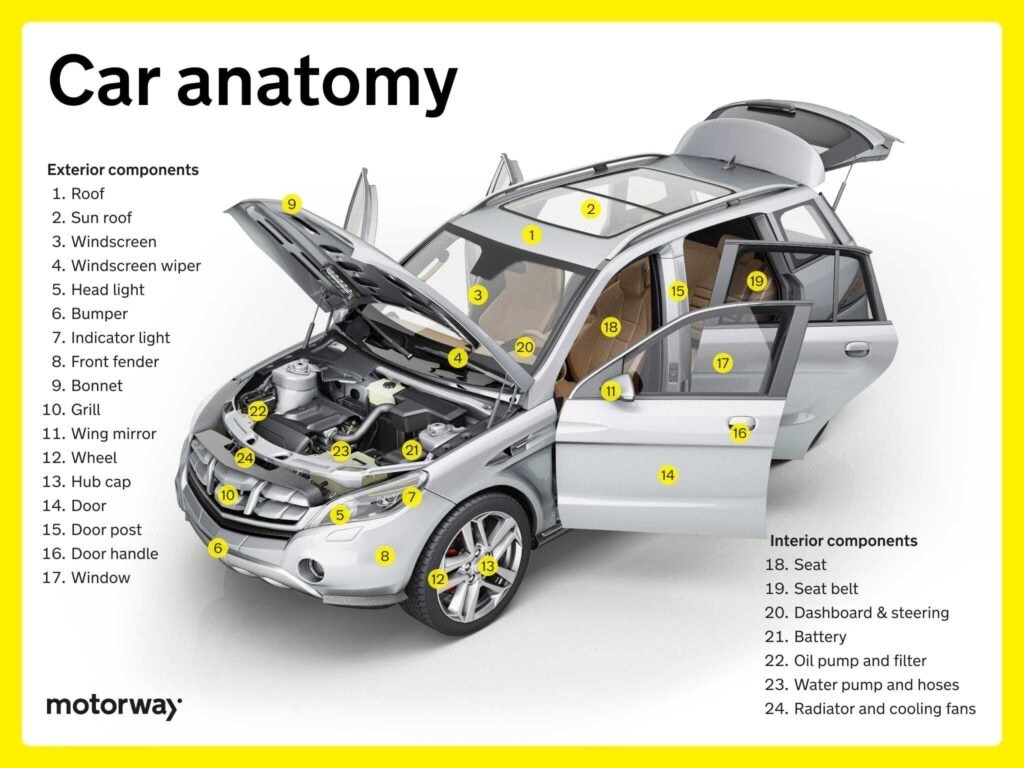
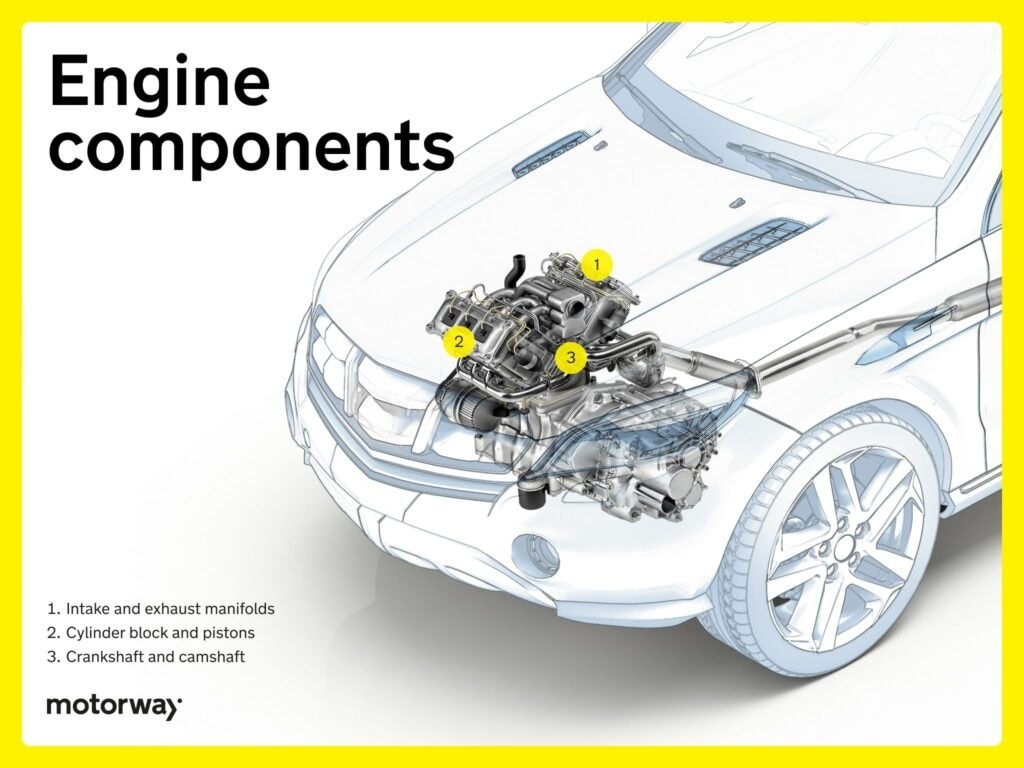
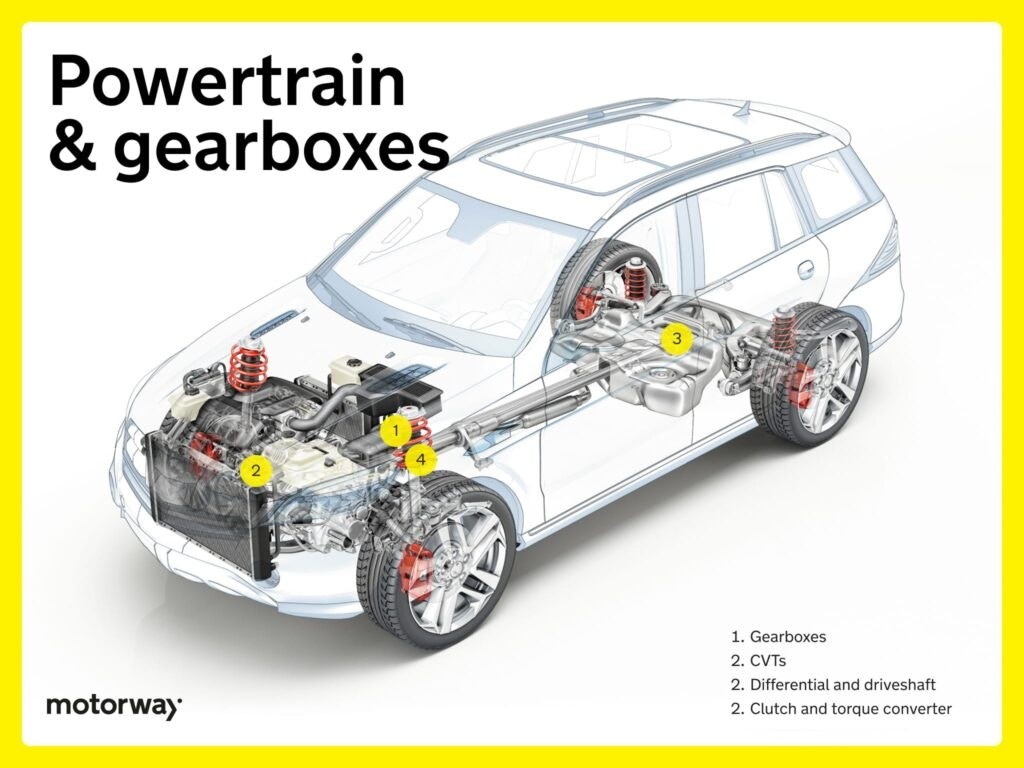
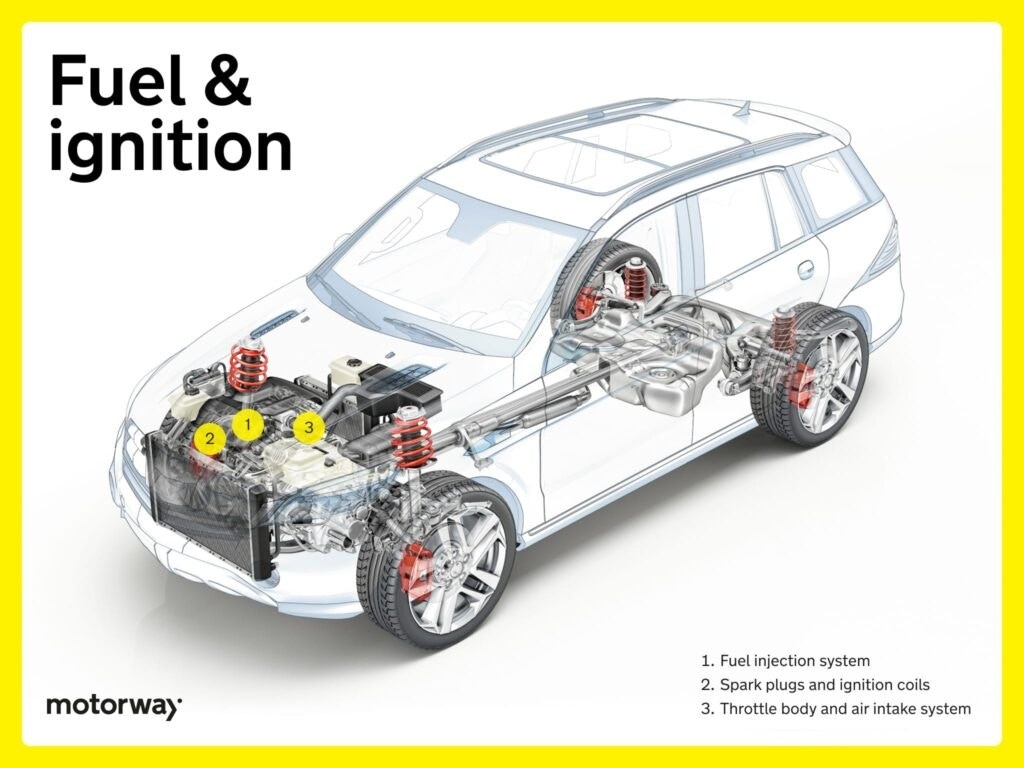
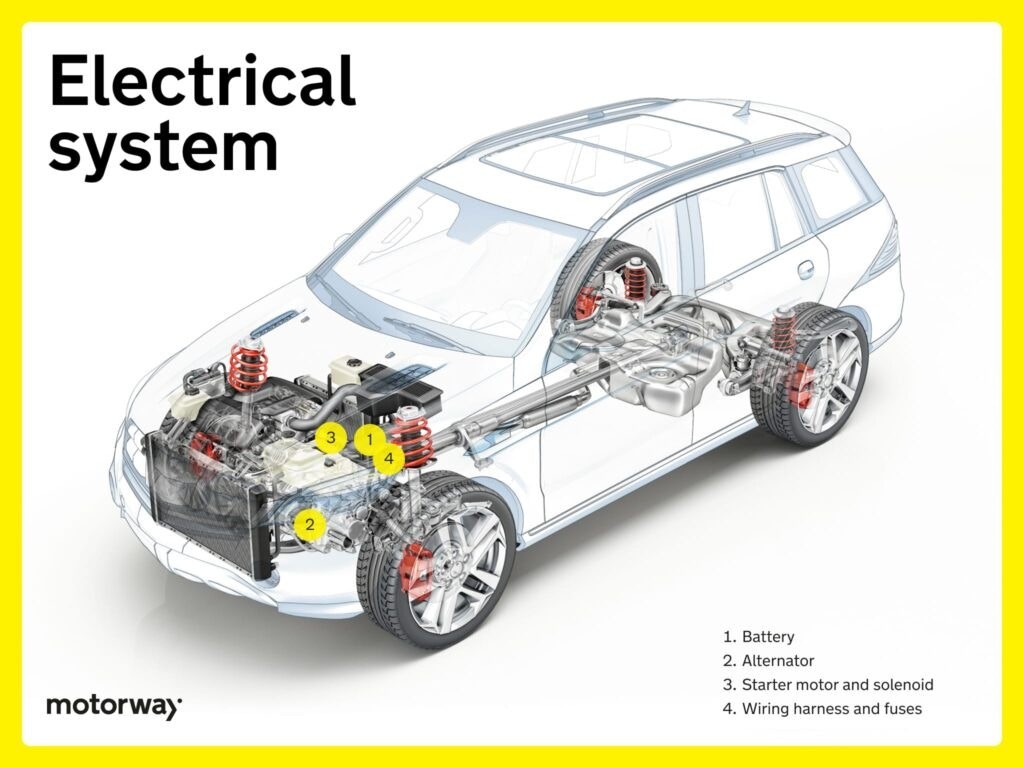
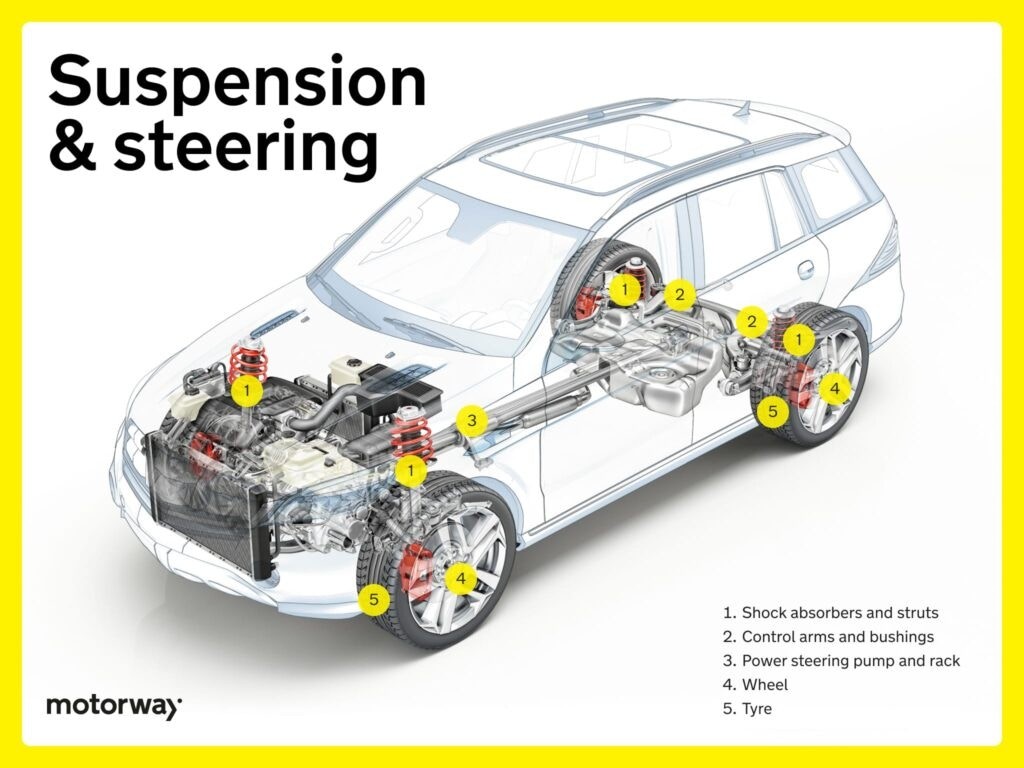
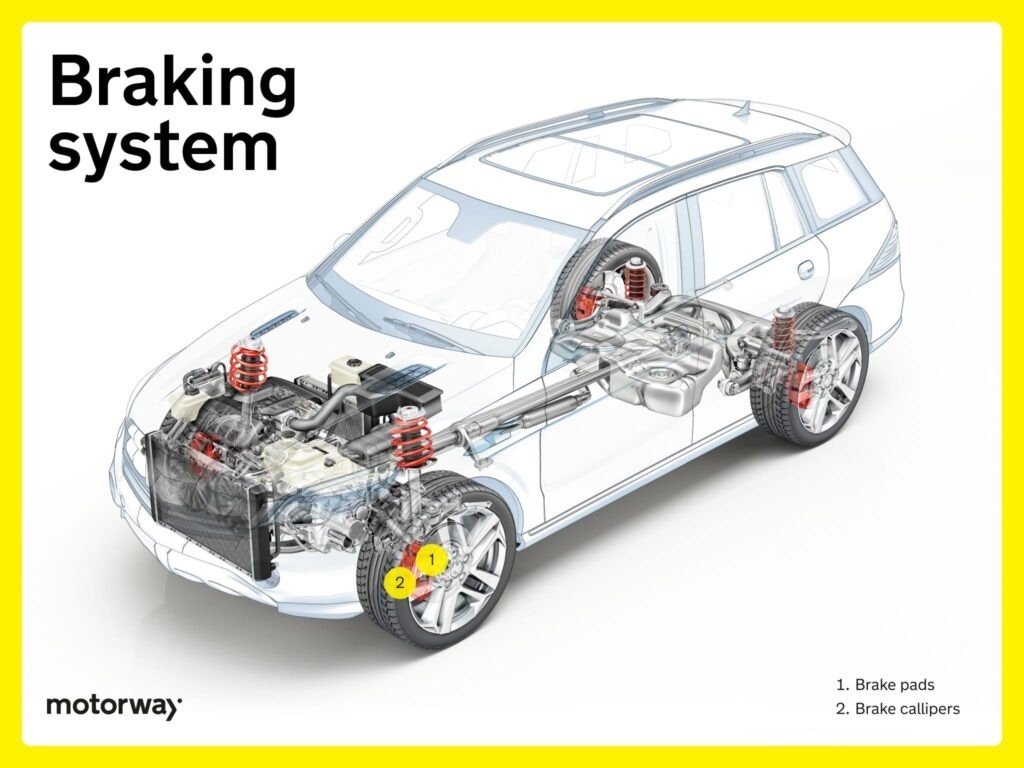
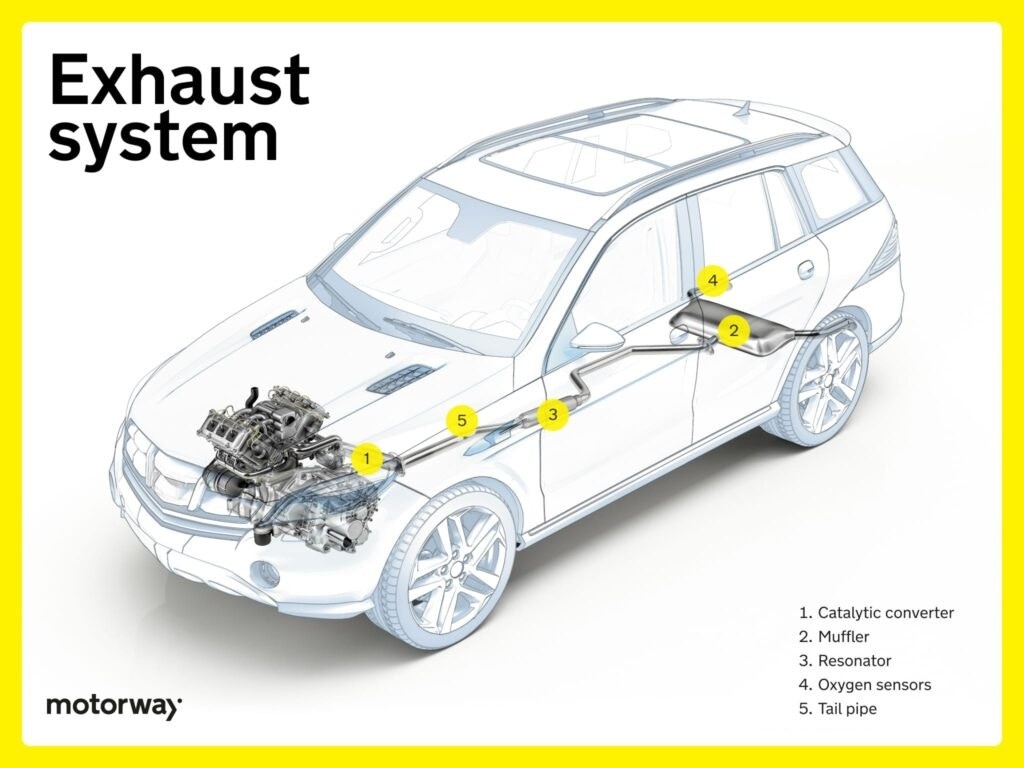
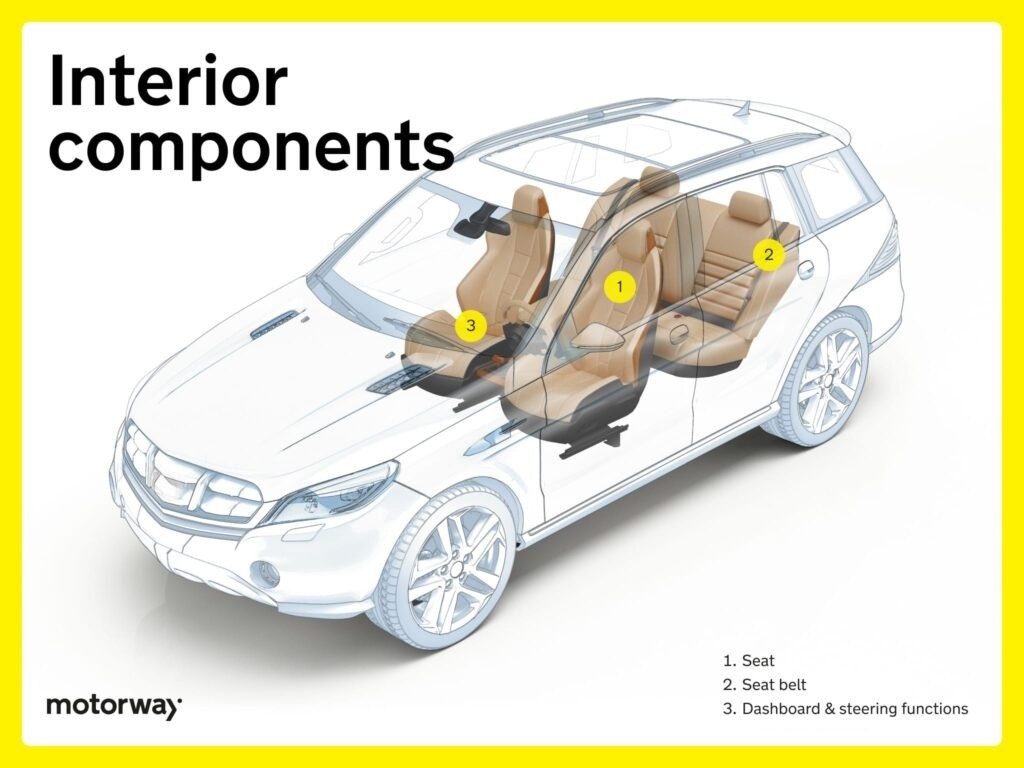
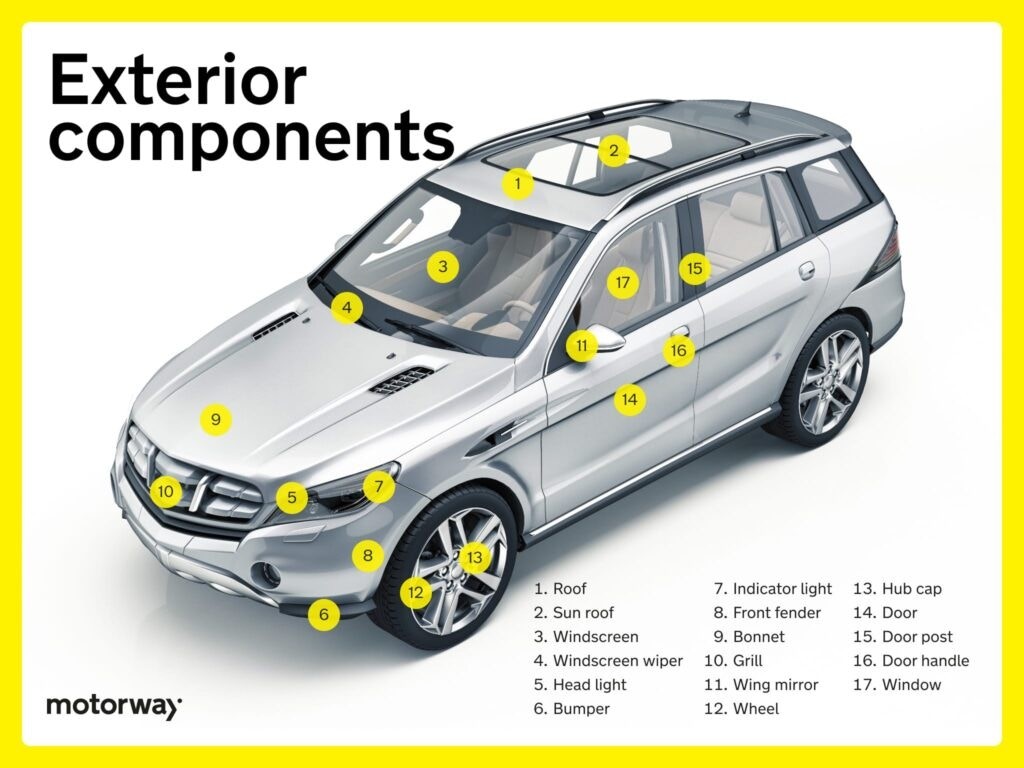
Wheel Construction Guide: Alloy vs. Steel Wheels
Wheel construction significantly impacts wheel weight, strength, and aesthetics. Here’s a breakdown of common wheel construction types:
- One-piece construction: The wheel is manufactured from a single piece of material, typically either alloy or steel. This is the most common construction method for both alloy and steel wheels, offering simplicity and cost-effectiveness.
- Two-piece construction: The wheel consists of two primary components: the center and the outer rim. These pieces are joined together, usually by bolting or welding. Two-piece wheels are often found in performance or custom applications, allowing for some design flexibility.
- Three-piece construction: The wheel is assembled from three separate parts: the center, the outer rim, and an inner hoop. This modular design provides maximum customization options, particularly in aftermarket wheels, allowing for adjustments to width and offset.
- Forged construction: Forged wheels are created from a solid billet of metal that is compressed under extremely high pressure. This process results in a wheel that is significantly stronger and lighter than cast wheels. Forged wheels are typically used in high-performance and racing applications where weight and strength are paramount.
- Multi-piece construction: This category encompasses wheels made from multiple components, often including a center section, an outer rim, and numerous bolts. Multi-piece wheels offer versatility in sizing, styling, and customization possibilities.
Material choice also plays a crucial role in wheel characteristics:
- Alloy wheels: Made from a blend of metals, primarily aluminum or magnesium alloys. Alloy wheels are significantly lighter than steel wheels, improving handling, fuel efficiency, and heat dissipation from the brakes. They also offer a wider range of aesthetic designs.
- Steel wheels: Constructed from steel, providing robust strength and durability. While heavier than alloy wheels, steel wheels are more cost-effective and well-suited for rugged driving conditions or winter use due to their resistance to corrosion and damage.
Tyre Pressure Monitoring System (TPMS): Maintaining Optimal Inflation
The Tyre Pressure Monitoring System (TPMS) is a vital safety feature in modern vehicles. TPMS continuously monitors the air pressure within each tyre using sensors mounted in the wheels. It transmits real-time pressure data to the vehicle’s computer system. If tyre pressure deviates from the recommended levels, the TPMS alerts the driver with a warning light on the dashboard. Maintaining proper tyre inflation through TPMS contributes to safety, optimal fuel efficiency, extended tyre lifespan, and improved handling.
FAQs: Common Questions About Car Parts
What parts are under a car?
Beneath a car’s body, you’ll find a range of essential systems and components. This includes the engine, transmission, exhaust system, suspension system, driveshaft, differential, and fuel system. These parts work interdependently to enable the vehicle’s movement, performance, and overall functionality.
How many car parts are on a car?
The answer to how many car parts are in a car is quite astonishing. Modern vehicles are incredibly complex machines, comprised of over 30,000 individual parts. This vast number encompasses components across all systems, from the smallest fasteners to major assemblies like the engine and transmission. Electric vehicles, while simpler in engine design, still contain a significant number of parts, though generally fewer than internal combustion engine cars due to the reduced complexity of their powertrains.
What are the important parts of a vehicle?
Numerous parts are critical for a vehicle’s safe and reliable operation. Key components include the engine, transmission, braking system, steering system, suspension, tyres, and electrical system. Each of these systems plays a vital role in ensuring the vehicle’s mobility, handling, safety, and overall performance.
What parts of a car can be sold separately?
Many car parts can be sold individually, particularly used parts. Common components sold separately include engines, transmissions, body panels (doors, hoods, bumpers), wheels, tyres, seats, and various electrical components like alternators and starters. The market for used car parts provides options for repairs, replacements, and upgrades, offering cost-effective solutions for vehicle maintenance.
Why is there a shortage of car parts?
Global events and complex supply chains can lead to car part shortages. Disruptions in the supply chain, increased demand for specific components, manufacturing bottlenecks, natural disasters, and geopolitical events can all contribute to shortages. These shortages can impact vehicle production, repair times, and the availability of certain car models.
Need to Sell Your Car?
Want to expand your knowledge of car ownership, maintenance, or even selling your vehicle? Explore our comprehensive guides here, covering topics from Clean Air Zones to car tax, number plate changes, and part exchange.